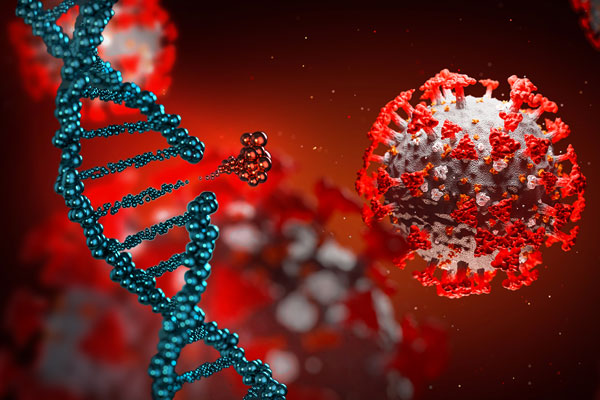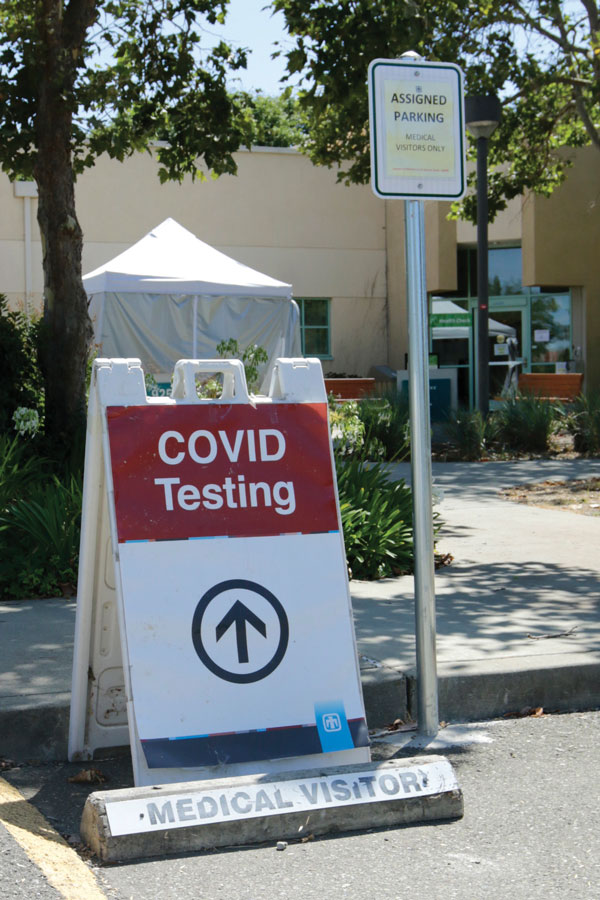
As Sandia and the nation came to terms with a new, socially distanced reality, researchers within the Labs’ Integrated Security Solutions Division were working to understand the biology of the novel coronavirus, learn how the human body responds to infection by SARS CoV-2 and model how COVID-19 spreads in a population.
Labs Director James S. Peery and the senior leadership team tapped Anup Singh, director of the Chemical, Biological, Radiological, Nuclear Defense & Energy Technologies Center, to lead the research effort for conducting a biological analysis of the coronavirus and developing innovative solutions. Anup and his team, which included dozens of scientists and doctors, were responsible for breakthroughs that helped inform scientific knowledge about COVID-19 and how to combat it.
Below are just a few of the more than 50 projects related to the new virus that Sandia has engaged in to make our communities and the nation better able to respond to this and other pandemics.
COVID-19 infection-testing protocol
To protect mission-essential functions, keep the workforce safe and help reduce the spread of COVID-19 at facilities, Sandia became the first DOE lab on April 7 to start testing its workforce for COVID-19 infection. By converting several biological research labs, Sandia now has the capacity to test hundreds of samples each day.
Tailorable antiviral
Researchers are conducting trials to create a deployable antiviral countermeasure for COVID-19 using CRISPR-based technology. The goal of this research is to find viral-outbreak countermeasures that are “reloadable,” meaning they do not have to be reinvented each time an outbreak occurs. Once the research is complete, the new antiviral will have a customization component, enabling it to respond to many different viruses, including coronavirus. This project is funded by the U.S. Department of Defense through the Defense Advanced Research Projects Agency.
Sterilizing masks with supercritical carbon dioxide
Sandia testing is underway to see if supercritical carbon dioxide can safely and reliably sterilize N95 masks and other essential medical supplies for reuse by health care workers on the front lines of the COVID-19 pandemic. Many conventional sterilization methods cannot be used because they degrade mask performance. Supercritical CO2 is a solvent that can penetrate microporous materials without leaving residue, alleviating the need to use harsher, more hazardous chemicals for sterilization. If deemed an appropriate and effective solution, supercritical CO2 could be deployed rapidly, at a wide scale.
Forecasting COVID 19
A team at Sandia/California developed a statistical method to characterize partially observed epidemics in real time. Observations consist of daily counts — culled from open-source Centers for Disease Control and Prevention data — of symptomatic patients diagnosed with COVID-19. The data are then used to estimate epidemiological model parameters for short-term forecasts of the ongoing pandemic, as well as to provide information for the time-dependent infection rate. Such forecasts are helping to assess the demand for medical resources and other governmental needs.
Rapid point-of-care serological tests

Researchers are developing a panel of immunoassays to enable the detection of viral antigens and anti-SARS-CoV-2 antibodies produced by hosts in response to infection. These immunoassays will be implemented through Sandia’s portable SpinDx platform, which offers rapid detection capabilities without requiring sample preparation. The SpinDx immunoassays will be complemented by a method for directly detecting viral RNA by coupling the quenching of unincorporated amplification signal reporters technique with reverse-transcription loop-mediated isothermal amplification. The combination of SpinDx immunoassays with QUASR RT-LAMP will provide a powerful method for diagnosing COVID-19 at all stages of disease. Moreover, researchers will be able to positively identify SARS-CoV-2 while ruling out influenza or other coronaviruses.
Sequencing the coronavirus
This project makes it easier for researchers to catalog the more than 150 variations of the SARS2 genome that is responsible for COVID-19. For SARS2 proteins, such as the spike protein that makes contact with mammalian cells, these sequence variants can be tracked so that biologists can adapt countermeasures to deal with the changes. Sandia is also investigating whether sequence changes may affect the diagnostic tests used by the Centers for Disease Control and Prevention and others.